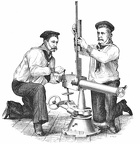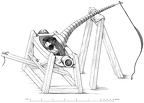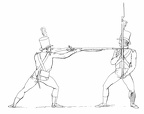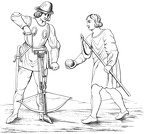20 photos
Home / Albums / Technology / Weapons 58
-
Machine Guns
18 photos -
Medieval Siege Weapons
18 photos -
Swords
17 photos -
Bows
27 photos -
Handguns
7 photos -
Artillery
57 photos

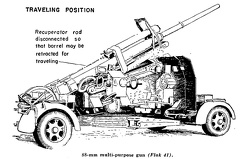 Travelling Position
Travelling Position Firing Position
Firing Position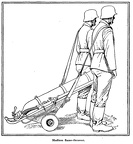 Medium flame-thrower
Medium flame-thrower Panzer
Panzer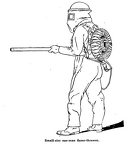 Small-size one-man flame-thrower
Small-size one-man flame-thrower 15-mm aircraft cannon
15-mm aircraft cannon 20-mm aircraft cannon
20-mm aircraft cannon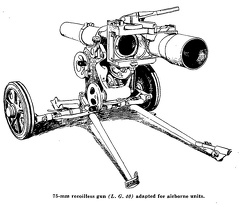 75-mm recoilless gun
75-mm recoilless gun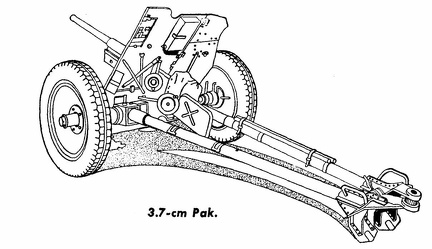 3.7-cm Pak
3.7-cm Pak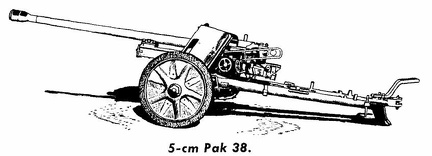 5-cm Pak 38
5-cm Pak 38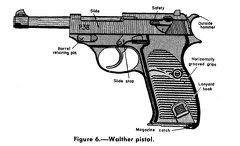 Walther pistol
Walther pistol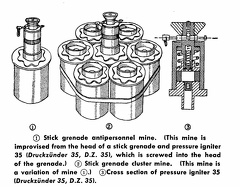 Stick grenade antipersonnel mine
Stick grenade antipersonnel mine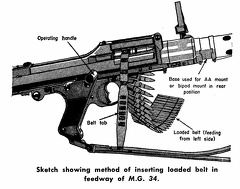 Sketch showing method of inserting loaded belt in feedway of M.G. 34
Sketch showing method of inserting loaded belt in feedway of M.G. 34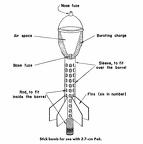 Stick bomb for use with 3.7 cm Pak
Stick bomb for use with 3.7 cm Pak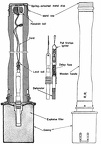 Sketch of Stick hand grenade
Sketch of Stick hand grenade Sketch of Eierhandgranate 39 (egg-type hand grenade, model 39)
Sketch of Eierhandgranate 39 (egg-type hand grenade, model 39)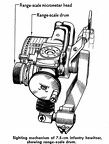 Sighting mechanism of 7.5-cm infantry howitzer, showing range-scale drum
Sighting mechanism of 7.5-cm infantry howitzer, showing range-scale drum Right side of 5-cm mortar
Right side of 5-cm mortar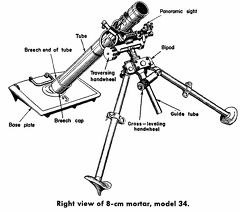 Right view of 8-cm mortar, model 34
Right view of 8-cm mortar, model 34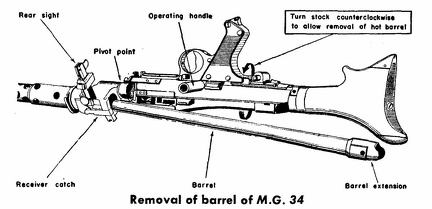 Removal of barrel of M.G. 34
Removal of barrel of M.G. 34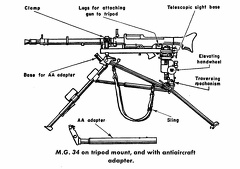 MG 34 on tripod mount
MG 34 on tripod mount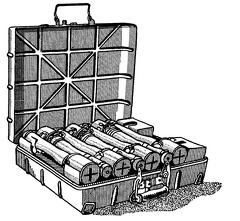 Method of carrying and packing stick-type grenades
Method of carrying and packing stick-type grenades Method of removing receiver of M.P. 40 from barrel and from magazine hosing
Method of removing receiver of M.P. 40 from barrel and from magazine hosing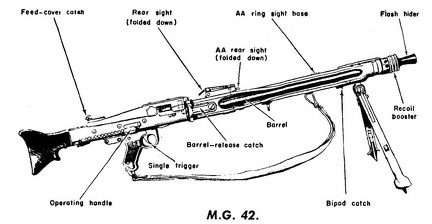 M.G. 42
M.G. 42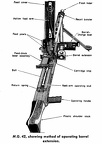 M.G. 42, showing method of operating barrel extension
M.G. 42, showing method of operating barrel extension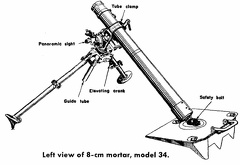 Left view of 8-cm mortar, model 34
Left view of 8-cm mortar, model 34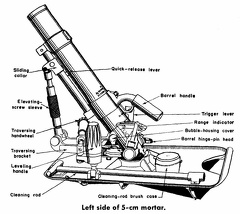 Left side of 5-cm mortar
Left side of 5-cm mortar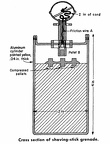 Cross-section of shaving-stick grenade
Cross-section of shaving-stick grenade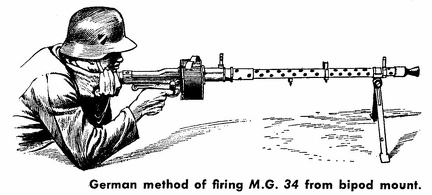 German method of firing M;G. 34 from bipod mount
German method of firing M;G. 34 from bipod mount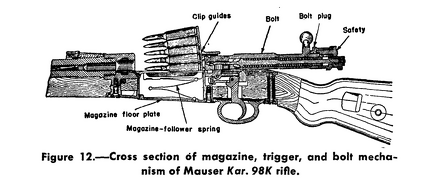 Cross section of magazine, trigger, and bolt mechanism of Mauser Kar. 98K rifle
Cross section of magazine, trigger, and bolt mechanism of Mauser Kar. 98K rifle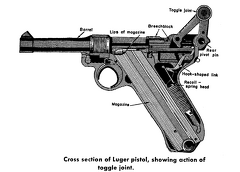 Cross Section of Luger pistol
Cross Section of Luger pistol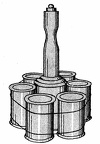 Concentrated charge made from stick grenades
Concentrated charge made from stick grenades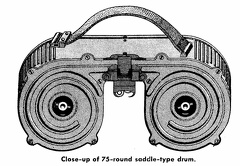 Close-up of 75-round saddle-type drum
Close-up of 75-round saddle-type drum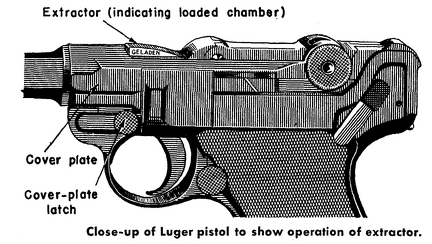 Close-up of Luger pistol to show operation of extractor
Close-up of Luger pistol to show operation of extractor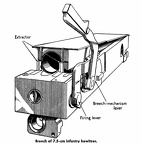 Breech of 7.5-cm infantry howitzer
Breech of 7.5-cm infantry howitzer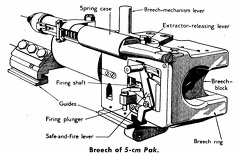 Breech of 5-cm Pak
Breech of 5-cm Pak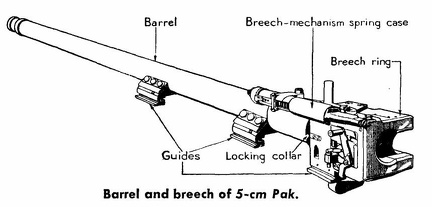 Barrel and breech of 5-cm Pak
Barrel and breech of 5-cm Pak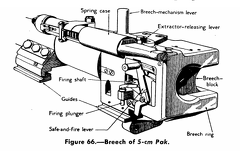 30.12.2021 20.39.19 REC
30.12.2021 20.39.19 REC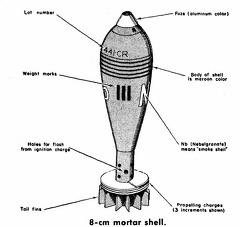 8 cm Mortar Shell
8 cm Mortar Shell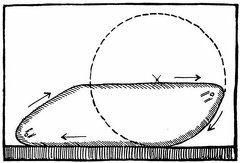 Diagram Showing Adaptation to the 'Large-Wheeled Tractor' Idea
Diagram Showing Adaptation to the 'Large-Wheeled Tractor' Idea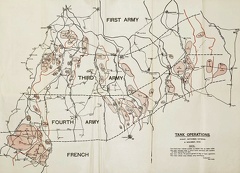 Map of Tank Operations, August–November, 1918
Map of Tank Operations, August–November, 1918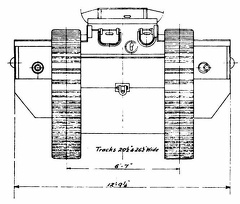 General Arrangements of Mark V. Tank—Front View
General Arrangements of Mark V. Tank—Front View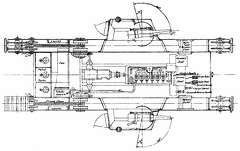 General Arrangement of Mark V. Tank—Sectional Plan
General Arrangement of Mark V. Tank—Sectional Plan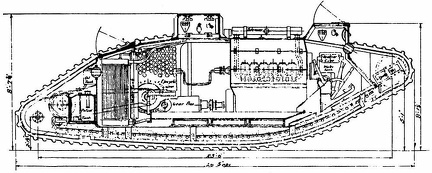 General Arrangement of Mark V. Tank—Sectional Elevation
General Arrangement of Mark V. Tank—Sectional Elevation 'Britain's Sure Shield'
'Britain's Sure Shield'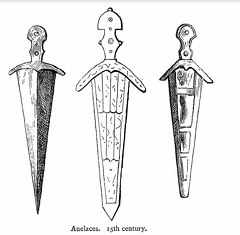 Anelaces
Anelaces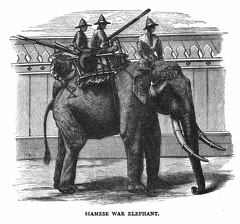 Siamese War Elephant
Siamese War Elephant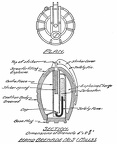 Hand Grenade No. 5
Hand Grenade No. 5 Hand Grenade No. 1
Hand Grenade No. 1 Hand Grenade No. 7. and Ball Hand Grenade
Hand Grenade No. 7. and Ball Hand Grenade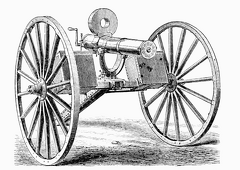 Gatling Gun on Field Carriage
Gatling Gun on Field Carriage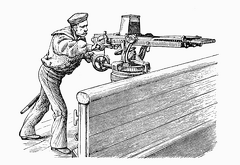 Nordenfelt-Palmcrantz Gun mounted on Ship's Bulwark
Nordenfelt-Palmcrantz Gun mounted on Ship's Bulwark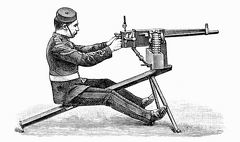 Rifle-calibre Maxim Gun
Rifle-calibre Maxim Gun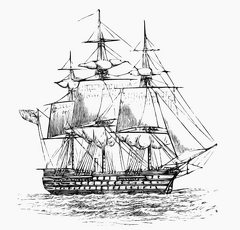 The Duke of Wellington
The Duke of Wellington Robins’ Balistic Pendulum
Robins’ Balistic Pendulum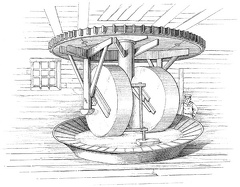 Powder Mill
Powder Mill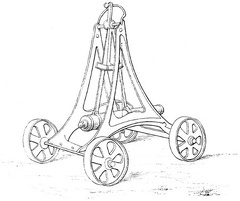 Old Eprouvette Pendulum
Old Eprouvette Pendulum Hand or Arrow Rocket
Hand or Arrow Rocket





